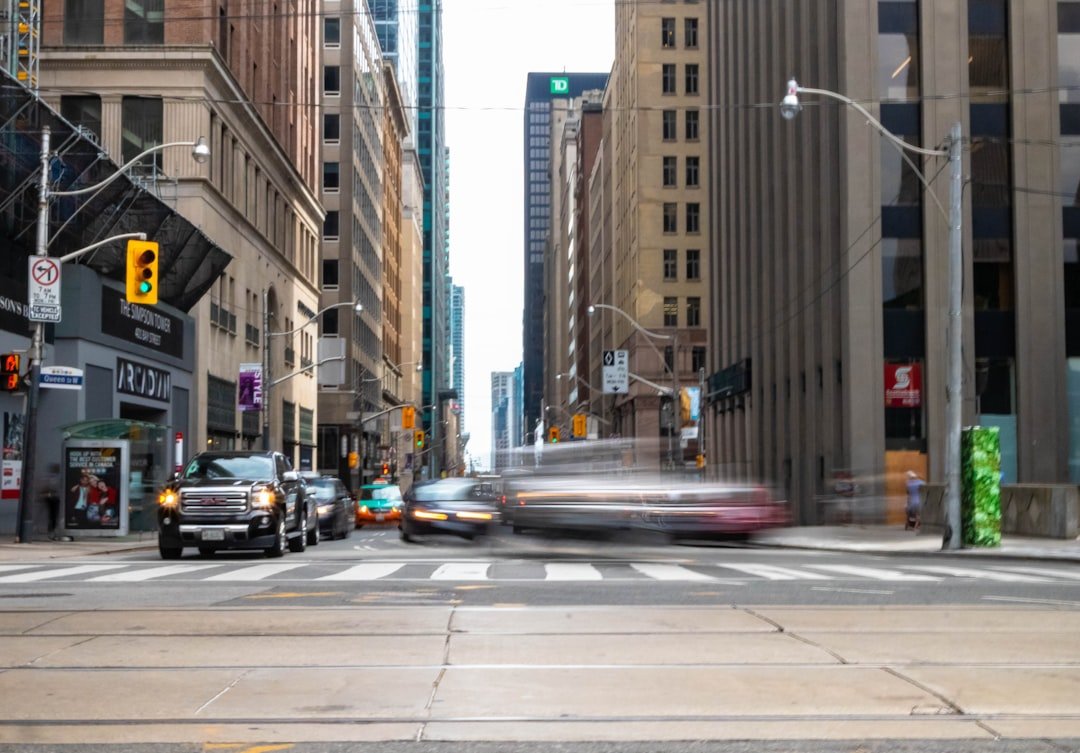A Comprehensive Study of Noise Pollution in New York City Known as the “city that never sleeps,” New York City is a thriving metropolis distinguished by its busy streets, cosmopolitan population, and famous landmarks. But there is a price for this vibrancy: noise pollution. An overpowering auditory environment is produced by the clamor of honking automobiles, construction activities, and the continuous hum of city life. Noise pollution has a significant impact on New Yorkers’ quality of life and is not just an annoyance.
Key Takeaways
- Noise pollution has a significant impact on the quality of life for New York City residents, affecting their physical and mental well-being.
- Current regulations and policies in place to address noise pollution include the New York City Noise Code, which sets limits on acceptable noise levels for different types of activities and areas.
- The health effects of noise pollution on New York City residents can include increased stress, sleep disturbances, and even cardiovascular problems.
- Innovative solutions for reducing noise pollution in urban environments include the use of sound barriers, green spaces, and noise-reducing technologies in construction and transportation.
- Urban planning and design play a crucial role in mitigating noise pollution by incorporating sound-absorbing materials, creating buffer zones, and implementing zoning regulations for noise-sensitive areas.
Decreased general well-being, disturbed sleep patterns, and elevated stress levels can result from the constant noises. The effects of noise pollution go beyond personal annoyance. It has an impact on the dynamics of the community and may even have an impact on economic factors.
Property values, for example, may drop in noisy neighborhoods as prospective purchasers are put off by the unsettling atmosphere. Businesses might also have trouble drawing clients if their establishments are thought to be too noisy. Therefore, comprehending the complex effects of noise pollution is essential to creating practical plans to lessen them in New York City. New York City has put in place a number of laws & policies to try to reduce excessive noise levels in response to the widespread problem of noise pollution.
The main legislative framework governing noise control is the New York City Noise Code, which was passed in 2007. This code specifies acceptable noise levels for a range of activities and sets rules for street performances, construction projects, and other potentially disruptive activities. Also, the code gives the Department of Environmental Protection (DEP) the authority to enforce these rules and address residents’ complaints about noise.
| Metrics | Data |
|---|---|
| Number of Noise Complaints | 50,000 |
| Decibel Levels in Busy Areas | 80-90 dB |
| Percentage of Noise-related Health Issues | 15% |
| Number of Noise Violations Issued | 2,000 |
Enforcement is still difficult in spite of these laws. Many locals believe that authorities frequently ignore or respond to noise complaints insufficiently. Despite the city’s efforts to speed up response times & raise public awareness of the Noise Code, enforcement gaps still exist. Also, the emergence of new technologies and urban activities like live music & outdoor dining has presented regulators with new difficulties. In order to effectively address new sources of noise pollution, legislators must modify current laws as the city develops further. It is commonly known that noise pollution has negative health effects, and that these effects can be especially noticeable in crowded urban areas like New York City.
Numerous health problems, such as heart disease, hearing loss, and mental health disorders, have been linked to extended exposure to loud noise levels, according to research. The need for efficient interventions is highlighted by the World Health Organization’s classification of environmental noise as a major risk factor for public health. Stress and anxiety levels are frequently higher among New York City residents who live close to busy roads or construction sites. Constant noise can interfere with sleep cycles, resulting in weariness and a reduction in daytime productivity.
Moreover, learning challenges and developmental delays may be experienced by kids exposed to high noise pollution levels. Therefore, tackling noise pollution is not just a comfort issue but also a serious public health issue that needs to be addressed right away by both city officials & medical professionals. Novel approaches to establishing more peaceful urban settings are being developed as cities struggle with the problems caused by noise pollution. Using sound barriers, which are actual buildings made to absorb or deflect sound waves, is one promising strategy. Because construction sites and highways tend to have the loudest noises, these barriers can be especially effective there.
Urban planners are also increasingly including green spaces in city plans as they realize that plants can serve as a natural sound buffer and reduce noise. Using smart technology to track and control noise levels in real time is another creative solution. Sensors that can identify excessive noise and notify authorities or citizens when thresholds are exceeded are being investigated by cities such as New York. This proactive approach promotes adherence to current regulations & enables faster responses to noise complaints.
Urban areas can make great progress in lowering noise pollution and improving the quality of life for their citizens by utilizing technology and innovative design techniques. In urban areas like New York, urban planning and design are essential to combating noise pollution. Reliance on motor vehicles can be decreased by carefully planning cities to encourage mixed-use development & shorten the distance between residential neighborhoods and necessary services. Urban planners can reduce traffic congestion and the noise levels that go along with it by encouraging walkability and public transportation options. Also, noise pollution can be greatly reduced by including sound-sensitive design elements in new construction. One way to create quieter living spaces is to locate residential units away from busy streets or use soundproof building materials.
To further lessen exposure to disruptive noises, buffer zones with parks or green spaces can be established between residential neighborhoods and noisy areas. Urban planners can create environments that prioritize sustainability and livability by incorporating these factors into their planning procedures. The Influence of Local Perspectives. New Yorkers are frequently the ones most impacted by noise pollution and have important firsthand knowledge of its difficulties.
They can therefore offer distinct perspectives on regional problems, which makes them crucial to successfully combating noise pollution. promoting cooperation and increasing awareness. To increase public awareness of noise pollution & to advocate for stricter laws and enforcement strategies, grassroots organizations and advocacy groups have grown. These organizations run campaigns, workshops, & community gatherings to inform locals of their rights under the Noise Code. Also, encouraging cooperation between local authorities & residents is essential to creating workable solutions.
Encouraging Citizens & Promoting Change. By involving communities in the decision-making process, local residents are empowered & solutions are customized to fit their unique needs. By establishing forums for communication, locals can express their worries & participate in policy debates that affect their communities. In the end, community advocacy is essential to bringing about change and making authorities answerable for dealing with noise pollution.
New York City has laws to prevent noise pollution, but they are only as good as the enforcement & compliance systems in place. Although it is the responsibility of the Department of Environmental Protection (DEP) to keep an eye on noise levels and handle complaints, many locals express frustration with the DEP’s tardy response times or the lack of sufficient action against offenders. To make sure that current laws significantly reduce noise pollution, enforcement actions must be stepped up. Also, encouraging adherence to noise ordinances can be greatly aided by public awareness campaigns. By informing locals about acceptable noise levels and urging them to report infractions, communities can develop an accountable culture.
Also, stiffening the penalties for repeat offenders might discourage people or companies from causing disruptions. New York City may make great strides toward making the city a more tranquil place for all of its citizens by giving enforcement and compliance top priority. It will take a multipronged strategy that incorporates regulation, community involvement, creative solutions, and efficient enforcement to address noise pollution in New York City in the future. Cities must modify their approaches to address the changing problems caused by noise pollution as urbanization continues to pick up speed.
This could entail reviewing current laws to make sure they still apply in the context of emerging technologies & urban activity. Also, creating a collaborative environment among residents, community organizations, and city agencies will be essential to creating all-encompassing solutions that tackle the underlying causes of noise pollution. Future regulations and interventions will also be influenced by funding studies to learn more about the negative effects of noise exposure on health. In the end, by making noise reduction a top priority in public health and urban planning programs, New York City can endeavor to create a more peaceful living environment for its diverse population. In conclusion, even though noise pollution is a major problem in New York City, there are lots of chances to make improvements through creative thinking, community involvement, and strong law enforcement.
The city can create a more tranquil future that improves everyone’s quality of life by acting proactively now.



